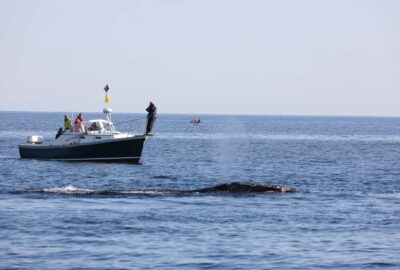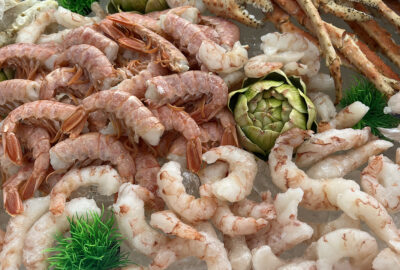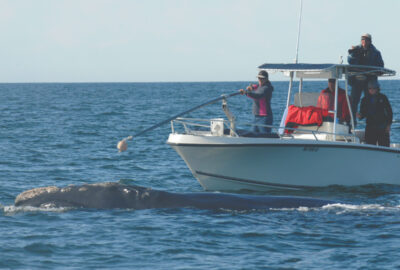How Selective Breeding Could Improve Aquaculture Sustainability
By New England Aquarium on Friday, March 23, 2018

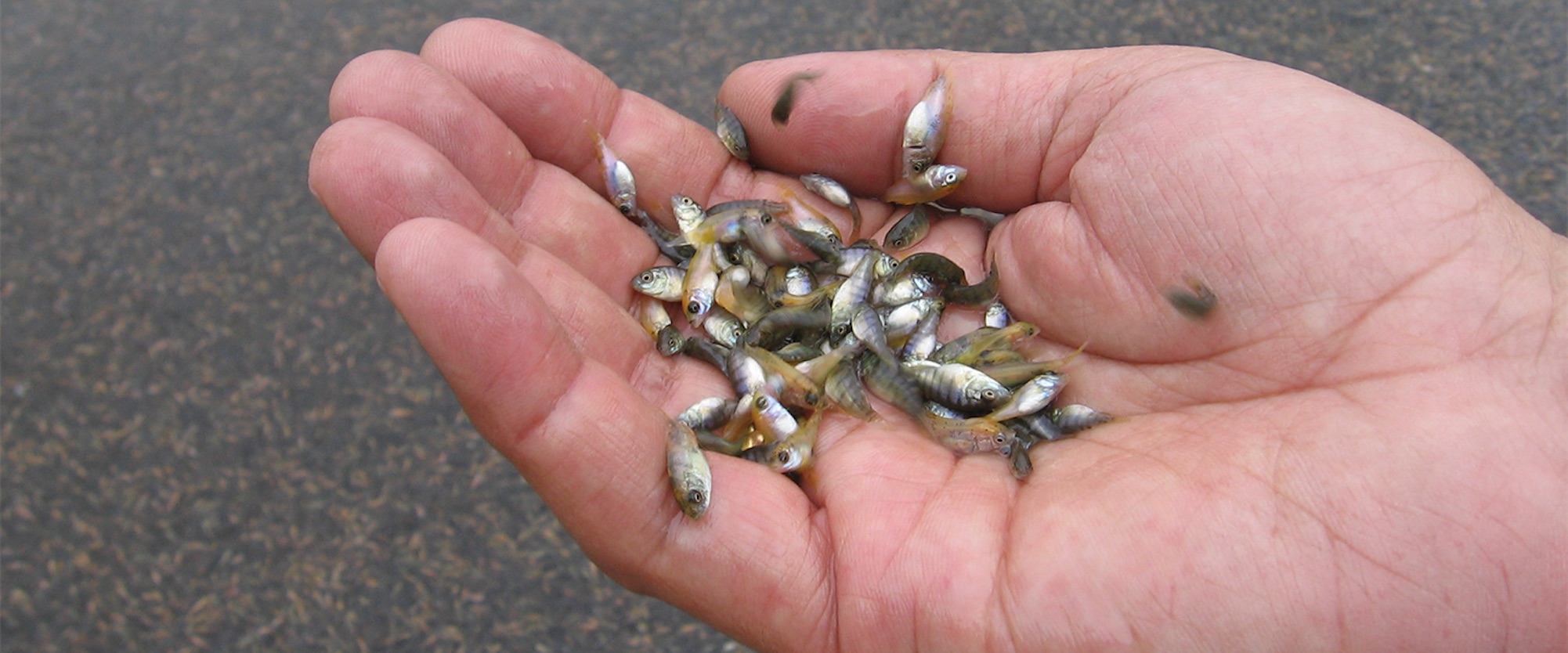
Last week, as the snow fell and the winds howled, two members of the Anderson Cabot Center for Ocean Life’s Fisheries and Aquaculture Solutions team braved the elements to advance a solution to seafood sustainability at the 2018 Boston Seafood Expo. Joel Southall (Business Engagement Manager) and Matt Thompson (Aquaculture Project Lead) participated on a panel entitled “Selective Breeding as a Solution to Aquaculture Sustainability,” which focused on an underutilized tool for addressing critical environmental issues in fish farming while also increasing production.
“Every presentation on sustainable aquaculture begins with the same slides,” Thompson joked at the start of his presentation. Those slides highlighted the Food and Agriculture Organization of the United Nation’s (FAO) prediction that with 89.5 percent of global fisheries currently being either fully fished or overfished, the only way to meet future seafood demand is for aquaculture to produce another 30 million metric tons by 2030.
“The growth of aquaculture, while very positive, has sometimes not been well-planned or well-regulated, which has led to environmental damage,” said Thompson. “Consumers and responsible businesses are increasingly demanding that any increase in aquaculture production is done in a more sustainable way.”
No single accepted definition of aquaculture sustainability exists, but most would agree that it consists of performance across a range of criteria, such as its contribution to pollution or the impact escaped fish have on the local ecosystem. According to Thompson, most of these criteria can be put into a simple equation—the species being put into the system added with the production system its grown in (such as shrimp farmed in coastal ponds).
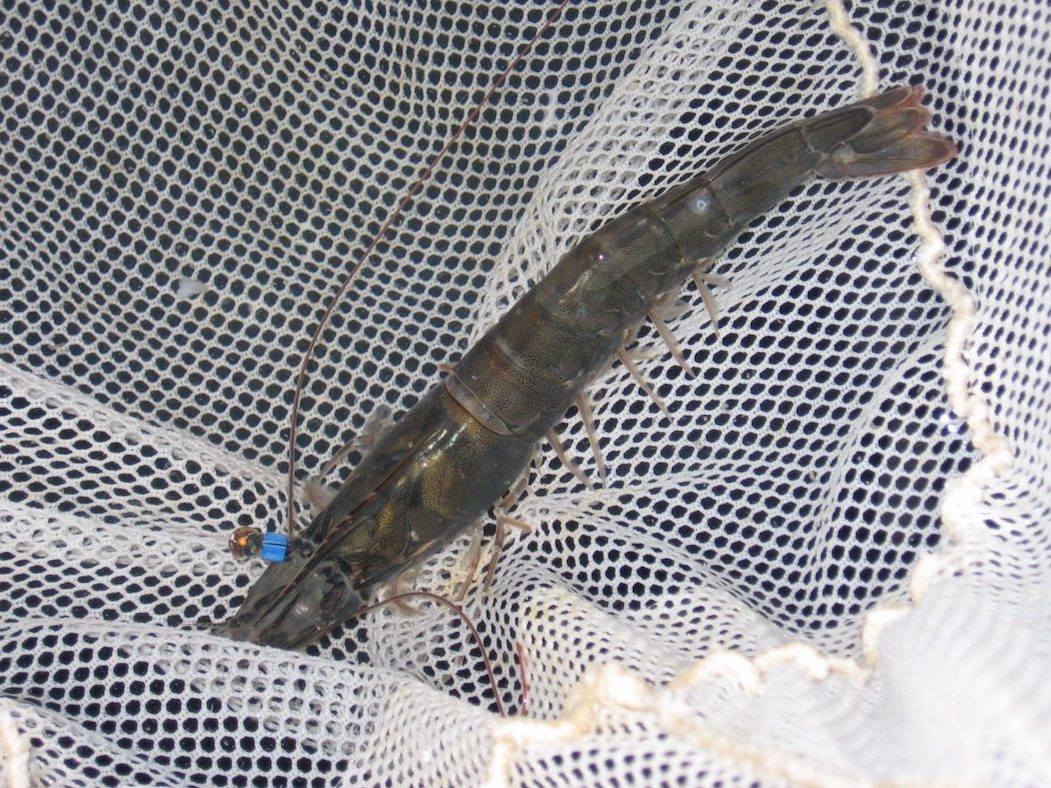
“Tools that improve production system factors, such as preventing escapes, already exist and include seafood ecolabels. Little work has been done on improving species factors, such as how resistant a fish is to disease or changing climates,” said Thompson. “We must improve both factors of the sustainability equation if we are to truly achieve sustainable aquaculture.”
Selective breeding is a tool for improving species factors and something that can benefit the environment and businesses. For example, resistance to disease is a heritable trait in most aquatic species, with estimated genetic improvement of about 12.5 percent per generation. The environmental benefits of more resistant fish include fewer veterinary drugs being applied, thus reducing the potential growth of resistance and reducing the risk that disease will be spread to wild fish populations. Business benefits include less wasted feed (often the most expensive element of aquaculture production) and increased predictability of fish supplying the market.
Farming selectively bred fish can increase the risk of impacts from escaped fish—issues that can be potentially minimized by using sterile fish on farms. As Thompson pointed out, there is a strong business case for preventing escapes. “Aside from the obvious loss of fish, if someone can put your fish into their breeding program then your competitive advantage maybe lost, but, more importantly, wild populations will likely be the source of genetic resistance to any future diseases.”
Southall, who moderated the panel discussion, highlighted another benefit of advancing selective breeding in aquaculture. “A unique benefit of this approach is that by improving just a small element of the industry, such as hatcheries where broodstock selection is applied, significant sustainability benefits can radiate out throughout an entire industry,” said Southall.
For more information on the Anderson Cabot Center for Ocean Life’s work to advance seafood sustainability, selective breeding, and other impactful solutions, please visit our Fisheries and Aquaculture Solutions page.

